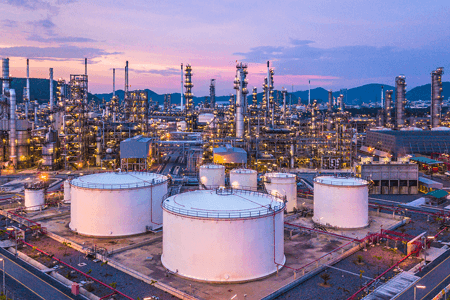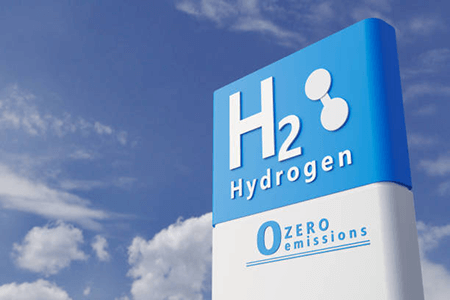While there is no single solution to meet the challenges of our diverse industry, chemistry companies are among the leaders and participants in exploring the development and use of a variety of lower-emissions technologies, including:
Technology Solutions for a Lower Emissions Future

Carbon Capture, Utilization and Storage (CCUS)
The chemical sector is a promising emerging and future market for utilization of captured CO2, where these innovations could help reduce emissions during the production of hydrogen, ammonia, and methanol, as well as high-value chemicals like ethylene, propylene, and aromatics.

- CCUS deployment can help advance progress on climate targets by decreasing the amount of CO2 emissions from stationary sources and removing CO2 from the energy system.
- Captured CO2 is used as a feedstock to make building materials, and it has potential uses as a feedstock for fuels, chemicals, plastics, and a variety of commercial products.
Lower-Emissions Hydrogen
Hydrogen is a lower-emissions energy source that can be burned in power plants and heavy-duty vehicles; used in fuel cells to general electricity for cars, homes and buildings; or used as an industrial feedstock. Chemical manufacturers are exploring and developing hydrogen as part of their strategies to help reduce GHG emissions.

- The use of lower-emissions sources of heat such as hydrogen can help transform steam cracking and other energy-intensive processes.
- In the vehicle sector, hydrogen and fuel cells could reduce emissions by 50 to 90 percent in light-duty vehicles, 35 percent in specialty vehicles, and achieve a 60 percent reduction in emissions compared with truck engine idling.
Combined Heat and Power (CHP) and other Process Efficiency Technologies
The chemistry industry is a leader in the use of Combined Heat and Power (CHP), a highly efficient process for generating heat and electricity on-site. By producing both heat and electricity from a single fuel source, CHP offers significant energy savings and carbon emissions benefits over the separate generation of heat and power.

- According to the U.S. Department of Energy (DOE), CHP can directly address a number of national priorities, including reducing energy operating costs and GHG emissions, increasing energy efficiency, enhancing the energy infrastructure and improving energy security and resiliency.
- Looking forward, DOE has identified over 73 gigawatts of potential new capacity across more than 50,000 industrial sector sites. Almost one-third of this additional potential capacity comes from the chemical sector.
Lower-Emissions Electricity
In the future, much of our nation’s new generation capacity is expected to come from natural gas or renewables (e.g., wind, solar, hydropower). Use of renewable electricity to drive chemical processes, including conversion, separation and purification, can offer a potential pathway toward lowering chemical industry emissions.
Nuclear Energy

Advanced nuclear technologies have significant potential; the U.S. benefits from a fleet of 96 nuclear reactors in 29 states, generating about 20 percent of the nation’s electricity. Despite this large fleet of carbon-free energy—the U.S. generates more than any country—nuclear power has not gained meaningful U.S. electricity market share in the past 30 years. Cost, technology, licensing, and other regulatory barriers are helping to reduce investment in new nuclear power plants.
Industrial Energy Efficiency Programs
Energy and process efficiency measures have contributed to significant GHG reductions for the chemical sector. Increased adoption, along with a focus on reducing the cost of more advanced energy efficiency technologies, could be critical to maximizing GHG reductions. DOE’s successful Better Plants program could be a model for future efforts.
Process Electrification
In the future, electrification of steam crackers and other manufacturing processes could be transformational for the chemical industry.

- As electric grids increase access to industrial-scale, lower-emissions energy, electric cracking technology could enable manufacturers to draw from these clean energy sources to heat steam cracker furnaces.
- Use of renewable electricity to drive chemical processes, including conversion, separation and purification, can offer a potential pathway toward lowering chemical industry emissions.
Our nation needs policies that encourage secure and reliable energy and electricity, rapid infrastructure development, timely and efficient permitting, and a diverse portfolio of energy sources and technologies. Meaningful progress could require an acceleration of technology and infrastructure investment, development and deployment by the private and public sectors and other stakeholders. As an industry, we’re working to accelerate development and scaling of these technologies to achieve emissions reduction.